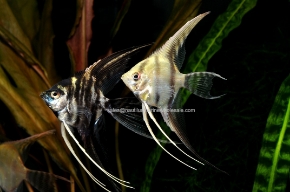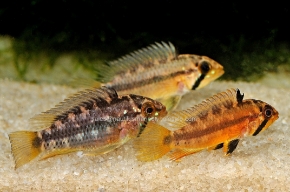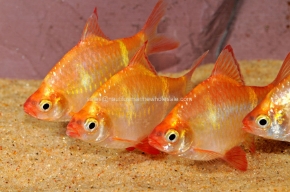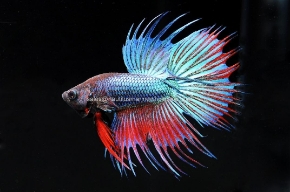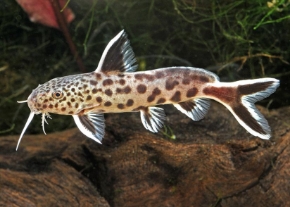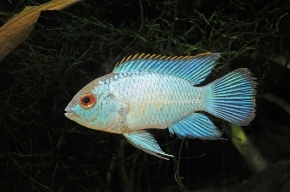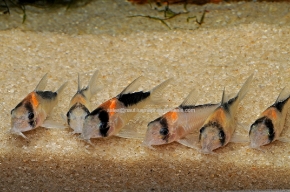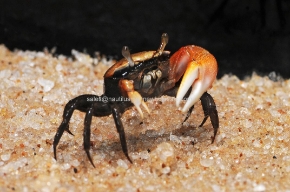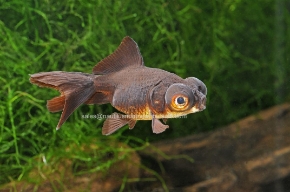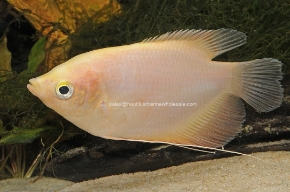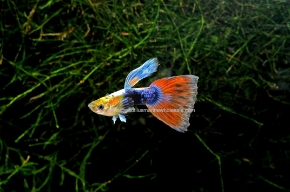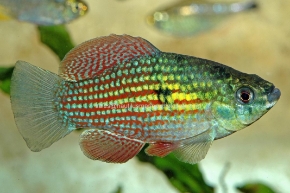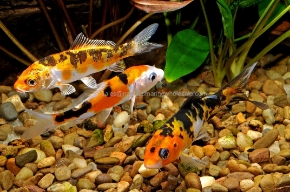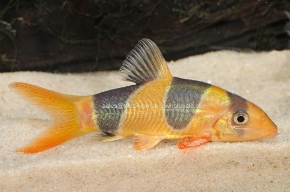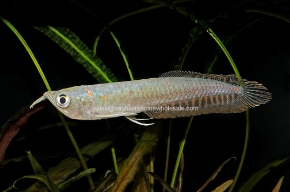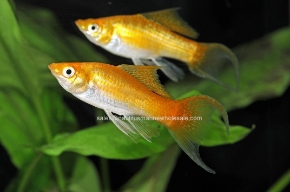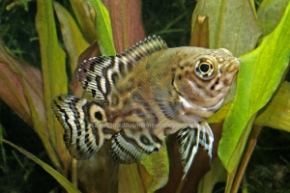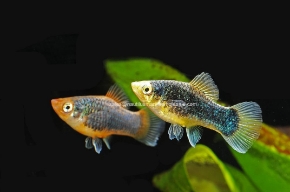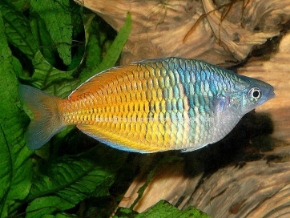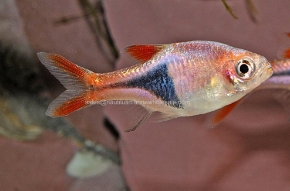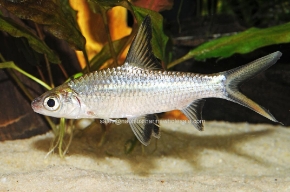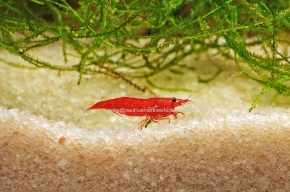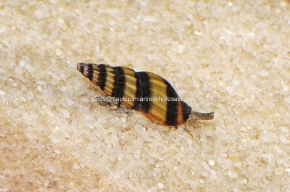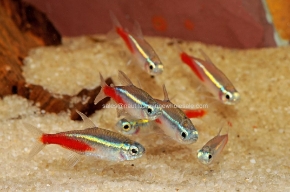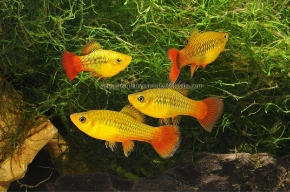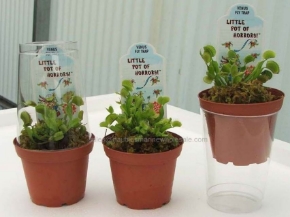SCIENTIFIC NAME: With many names based on colored varieties resulting from controlled breeding, Symphysodon aequifasciatus is referred to as the Red Turquoise Discus. The Red Turquoise Discus, is so named because of its striking turquoise and red stripes, red eyes, and red highlights on the fins. The overall coloration of Discus will vary depending on mood and overall health of the fish. As a result, this Discus is a favorite and prized collection member among hobbyists. Many aquarists consider discus to be finicky and not particularly hardy. They often become susceptible to disease and die if not kept in optimal conditions. The Red Turquoise Discus requires an advanced level of care due to its feeding habits and water filtration requirements. Water quality must be very high, as discus do not tolerate pollution of any sort very well. A good tank will be equipped with a high capacity biological filter and be fully cycled (which usually takes a month or more). Ammonia and nitrites should be kept at 0 ppm. Nitrates should also be kept as low as possible. Weekly water changes are very important. Aquariums for discus should be kept within a temperature range of 78-88 degrees F; a temperature of 84 degrees F is thought ideal for adults. Babies and young fish should be maintained at 88 degrees F. The water should be very soft and acidic; a pH of 5.5 - 6.5 is considered good for wild caught discus. Captive bred fish adapt very well to harder water and pH up to 7.2, except when attempting to breed, in which case soft and acidic is best. Discus are shy and generally peaceful aquarium inhabitants. They are sensitive to stress and disturbance or lack of protection. The best cohabitants may be angelfish and small characides like tetras. It is noteworthy however, that small fish may be intimidated or eaten by the discus. Catfish with sucker mouths are less than ideal cohabitants for discus since they sometimes attach themselves on the sides of discus and eat their mucus membranes. Territorial during spawning, this otherwise peaceful fish is among the schooling group, forming a well-defined nuclear family. Becoming slightly territorial when breeding, it is best to breed an established pair, or maintain a group of young Discus and allow them to pair themselves. Warm, soft, slightly acidic water is required for spawning. The pair will clean a flat surface (usually a broad leaf or the side of the aquarium) prior to spawning. The parents must not be removed from the fry; the fry feed on their parents' mucus. Feeding discus is sometimes a challenge. They have no unique nutritional requirements; they can be raised on just about any high-protein fish food. Largely carnivorous, the Red Turquoise Discus prefer freeze-dried bloodworms and tubifex, pellet food designed for Discus, high-quality flake food, and meaty frozen foods. However, discus are often extremely cautious about new foods; it is not unusual for them to go for weeks without food before accepting a new type of food. After starving for a month discus will almost always accept a new food, but this may stunt the growth of younger fish.


